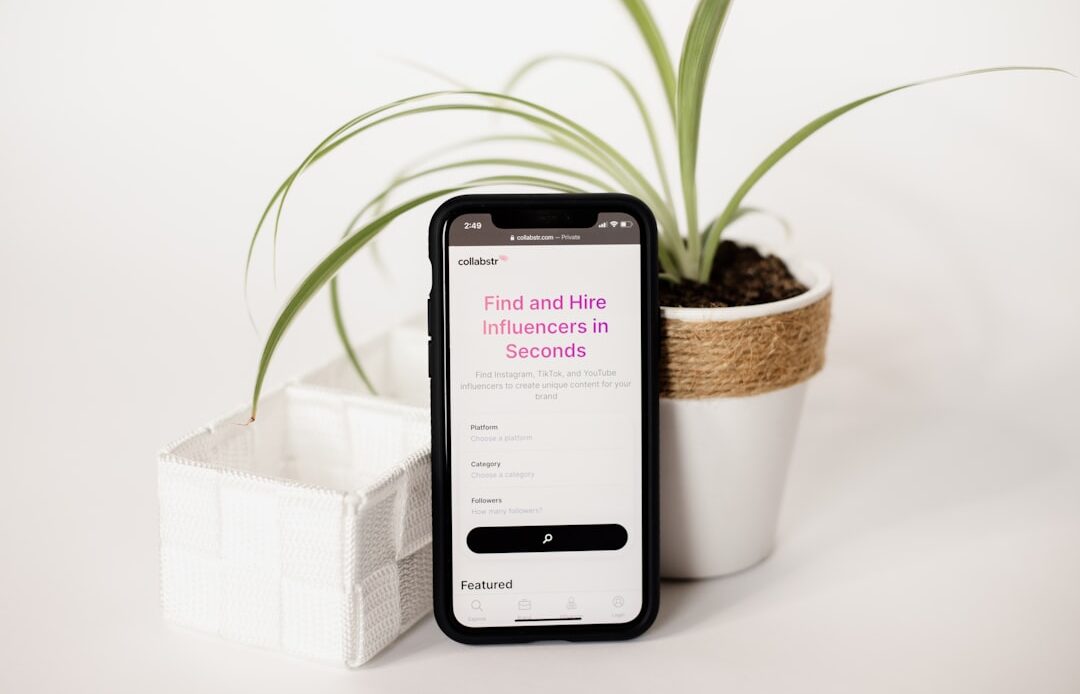
Influencer marketing has emerged as a powerful tool in the digital marketing landscape, leveraging the reach and credibility of individuals who have established authority and trust within specific niches. This form of marketing capitalizes on the social media presence of influencers—individuals who have cultivated a dedicated following through their expertise, lifestyle, or personality. Brands partner with these influencers to promote their products or services, tapping into the influencer’s audience to enhance visibility and drive engagement.
The effectiveness of influencer marketing lies in its ability to create authentic connections between brands and consumers, often resulting in higher conversion rates compared to traditional advertising methods. The rise of social media platforms has significantly contributed to the growth of influencer marketing. Platforms like Instagram, TikTok, and YouTube have become breeding grounds for influencers, allowing them to showcase their lifestyles, opinions, and endorsements to millions of followers.
This shift has transformed the way brands communicate with their target audiences, moving from one-way advertising to a more interactive and engaging dialogue. Influencers often share personal stories and experiences related to the products they endorse, which fosters a sense of trust and relatability among their followers. As a result, consumers are more likely to consider purchasing a product recommended by someone they admire or relate to, making influencer marketing an essential component of modern brand strategies.
Identifying the Right Influencers for Your Brand
Selecting the right influencers is crucial for the success of any influencer marketing campaign. Brands must consider various factors when identifying potential partners, including audience demographics, engagement rates, and content alignment. An influencer’s follower count is not the sole indicator of their effectiveness; rather, the quality of their engagement with their audience is paramount.
For instance, an influencer with a smaller but highly engaged following may yield better results than one with a vast audience that shows little interaction. Brands should analyze metrics such as likes, comments, shares, and overall engagement rates to gauge an influencer’s impact. Moreover, aligning with influencers whose values and aesthetics resonate with the brand is essential.
A beauty brand, for example, would benefit from collaborating with influencers who focus on skincare and makeup rather than those who primarily promote fitness or travel. Conducting thorough research into an influencer’s previous collaborations can provide insights into their authenticity and compatibility with the brand’s image. Tools like social listening platforms can help brands monitor conversations around specific influencers and assess their reputation within the industry.
By carefully selecting influencers who genuinely connect with their target audience and embody the brand’s ethos, companies can maximize the effectiveness of their campaigns.
Building a Successful Influencer Marketing Strategy

Creating a robust influencer marketing strategy involves several key components that align with the brand’s overall marketing objectives. First and foremost, brands must define clear goals for their campaigns. Whether the aim is to increase brand awareness, drive sales, or enhance customer loyalty, having specific objectives will guide the entire strategy.
For example, a new product launch may focus on generating buzz and excitement through influencer partnerships, while an established brand might prioritize customer retention through ongoing collaborations with trusted influencers. Once goals are established, brands should develop a comprehensive plan that outlines the campaign’s scope, budget, and timeline. This includes determining the types of content to be created—such as sponsored posts, stories, or videos—and how these will be distributed across various platforms.
Collaborating with influencers on content creation can lead to more authentic and engaging material that resonates with their audience. Additionally, brands should consider incorporating user-generated content into their strategy by encouraging followers to share their experiences with the product using specific hashtags or challenges. This not only amplifies reach but also fosters community engagement around the brand.
Creating Engaging Content with Influencers
The success of influencer marketing campaigns hinges on the quality of content produced in collaboration with influencers. Engaging content should be visually appealing, authentic, and tailored to resonate with both the influencer’s audience and the brand’s target market. Brands should encourage influencers to infuse their unique voice and style into the content while ensuring that key messaging aligns with the brand’s values.
For instance, a fitness brand might collaborate with an influencer to create workout videos that showcase how their products enhance performance while also reflecting the influencer’s personal fitness journey. In addition to traditional posts, brands can explore innovative content formats such as live streams, Q&A sessions, or behind-the-scenes glimpses into product development. These formats allow for real-time interaction between influencers and their followers, fostering a sense of community and engagement.
Furthermore, incorporating storytelling elements into content can enhance its emotional appeal. For example, an influencer might share a personal story about how a particular product positively impacted their life, creating a relatable narrative that resonates with viewers on a deeper level.
Measuring the Success of Influencer Marketing Campaigns
To evaluate the effectiveness of influencer marketing campaigns, brands must implement robust measurement strategies that assess various performance metrics. Key performance indicators (KPIs) such as reach, engagement rates, website traffic, and conversion rates provide valuable insights into how well a campaign is performing. For instance, tracking referral traffic from influencer posts can help brands understand how many users are visiting their website as a direct result of the campaign.
Additionally, brands should consider using tracking links or unique discount codes provided to influencers to measure sales generated through their promotions accurately. This data allows for a clearer understanding of return on investment (ROI) and helps brands refine future campaigns based on what worked well and what did not. Social media analytics tools can also provide in-depth insights into audience demographics and engagement patterns, enabling brands to make data-driven decisions for future collaborations.
Leveraging Influencer Relationships for Long-Term Brand Growth

Building lasting relationships with influencers can significantly contribute to long-term brand growth. Rather than viewing influencer partnerships as one-off transactions, brands should focus on cultivating ongoing collaborations that foster loyalty and authenticity. By engaging in consistent communication and collaboration with influencers over time, brands can create a sense of community around their products and values.
Long-term partnerships allow influencers to become genuine advocates for the brand, leading to more authentic endorsements that resonate with their audience. For example, a fashion brand might collaborate with an influencer for multiple seasons, allowing them to showcase new collections while maintaining a consistent narrative around style and lifestyle. This approach not only enhances brand visibility but also builds trust among consumers who see influencers consistently using and endorsing the products.
Avoiding Common Pitfalls in Influencer Marketing
While influencer marketing offers numerous benefits, brands must be cautious to avoid common pitfalls that can undermine campaign success. One significant challenge is failing to conduct thorough research on potential influencers before collaboration. Partnering with influencers who do not align with the brand’s values or whose audience does not match the target demographic can lead to ineffective campaigns and wasted resources.
Another common mistake is neglecting to establish clear expectations and guidelines for collaborations. Brands should communicate their goals clearly and provide influencers with creative freedom while ensuring that key messaging is maintained. Additionally, overlooking compliance with advertising regulations can lead to legal issues; brands must ensure that influencers disclose sponsored content appropriately to maintain transparency with their audience.
The Future of Influencer Marketing and Brand Growth
As digital landscapes continue to evolve, so too will influencer marketing strategies. The future will likely see an increased emphasis on authenticity and transparency as consumers become more discerning about whom they trust online. Brands will need to adapt by prioritizing genuine relationships with influencers who align closely with their values and resonate authentically with their audiences.
Moreover, advancements in technology will play a pivotal role in shaping influencer marketing’s future. The rise of artificial intelligence (AI) tools can enhance influencer discovery processes by analyzing audience engagement patterns and predicting campaign outcomes more accurately. Additionally, augmented reality (AR) experiences may become more prevalent in influencer collaborations, allowing consumers to interact with products in innovative ways before making purchasing decisions.
In conclusion, as brands navigate this dynamic landscape, they must remain agile and responsive to emerging trends while maintaining a focus on building meaningful connections through influencer partnerships. By doing so, they can harness the full potential of influencer marketing as a catalyst for sustained brand growth in an increasingly competitive marketplace.
